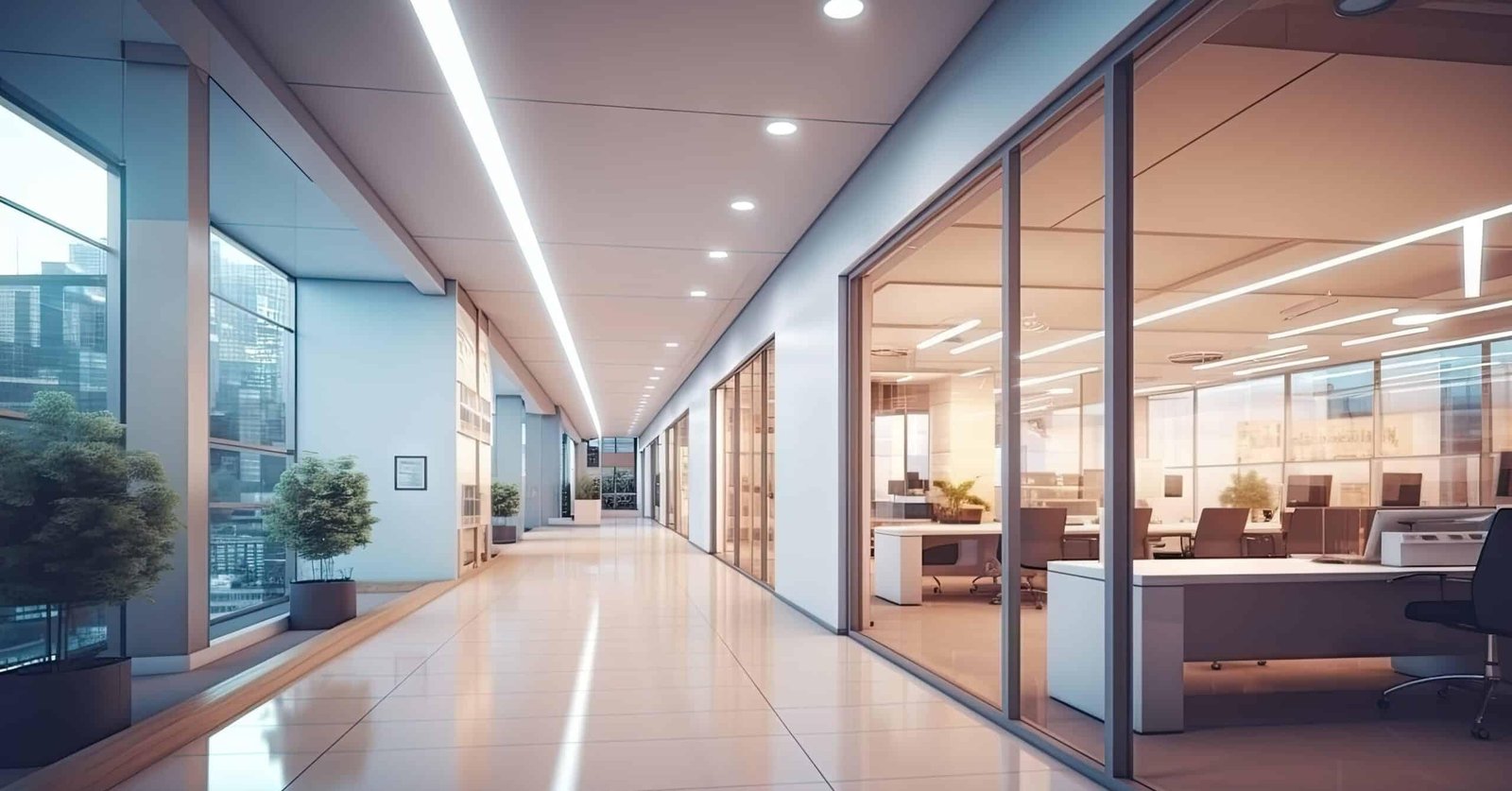As businesses increasingly focus on sustainability, energy efficiency has emerged as a critical factor in reducing operational costs and minimizing environmental impact. Commercial buildings, which account for a large portion of global energy consumption, present significant opportunities for energy savings through modern technologies and best practices. By optimizing energy use, companies can enhance productivity, improve building performance, and lower their carbon footprint. In this article, we’ll explore several key energy efficiency solutions for commercial buildings and how they contribute to a more sustainable future.
The Need for Energy Efficiency in Commercial Buildings
Energy efficiency in commercial buildings is more important than ever due to rising energy costs, stricter environmental regulations, and growing awareness of climate change. Commercial properties—such as office buildings, hotels, shopping malls, and manufacturing facilities—consume a vast amount of energy for heating, cooling, lighting, and equipment operation. As energy prices rise, businesses are motivated to explore ways to lower consumption and reduce costs. Simultaneously, regulatory bodies are implementing more stringent energy performance standards that commercial properties must meet.
Aside from financial savings, energy efficiency enhances a building’s market value and improves occupant comfort. Tenants and employees increasingly seek eco-friendly buildings that offer not only lower operating costs but also a healthier, more sustainable environment. Implementing energy-efficient technologies not only aligns with sustainability goals but also provides a competitive advantage in the marketplace.
Also Read : How Self-Service Kiosks Are Changing Customer Behaviour?
Key Energy Efficiency Strategies for Commercial Buildings
1. Building Automation Systems (BAS)
One of the most effective solutions for improving energy efficiency in commercial buildings is the use of Building Automation Systems (BAS). A BAS integrates various building systems—including heating, ventilation, air conditioning (HVAC), lighting, and security—into a centralized control platform. This allows building managers to monitor and adjust energy usage in real-time, optimizing efficiency based on occupancy patterns, outdoor conditions, and time of day.
For example, a BAS can adjust temperature settings during off-peak hours or automatically dim lights when rooms are unoccupied. By fine-tuning the operation of various systems, a BAS ensures that energy is used only when and where it is needed, significantly reducing waste. Additionally, modern BAS solutions offer advanced analytics and reporting, enabling facility managers to track performance and identify areas for further improvement.
2. Energy-Efficient HVAC Systems
HVAC systems are responsible for a substantial portion of energy consumption in commercial buildings. Upgrading to energy-efficient HVAC units and regular hvac maintenance can result in major savings on heating and cooling costs. High-efficiency HVAC systems use advanced technology, such as variable refrigerant flow (VRF) systems and heat recovery systems, to provide precise temperature control and minimize energy waste.
In addition to upgrading the system itself, regular maintenance is essential to ensure peak performance. Simple measures like cleaning air filters, sealing ducts, and checking refrigerant levels can prevent unnecessary energy losses. Furthermore, smart thermostats integrated with the BAS can automatically adjust HVAC settings based on room occupancy, further optimizing energy use.
3. LED Lighting Systems
Lighting accounts for a significant portion of energy consumption in commercial buildings, particularly in offices, retail spaces, and industrial facilities. Transitioning to energy-efficient LED lighting is a simple yet impactful solution for reducing energy costs. LED lights use significantly less electricity than traditional incandescent or fluorescent bulbs and have a much longer lifespan, reducing maintenance costs.
Additionally, pairing LED lighting systems with occupancy sensors or daylight harvesting systems can maximize energy savings. Occupancy sensors automatically turn lights on or off based on room occupancy, while daylight harvesting systems adjust artificial lighting levels based on the availability of natural light. These technologies ensure that lighting is only used when necessary, helping to cut energy use without sacrificing illumination quality.
4. Smart Windows and Insulation
Heat loss and gain through windows and poorly insulated walls are common sources of energy inefficiency in commercial buildings. Investing in energy-efficient windows and insulation can make a significant difference in a building’s heating and cooling needs. Smart windows, such as those with low-emissivity (low-E) coatings, minimize heat transfer, keeping buildings cooler in the summer and warmer in the winter. Additionally, high-performance insulation helps maintain stable indoor temperatures, reducing the need for constant HVAC operation.
Window films, shading systems, and automated blinds can also be integrated into the BAS, allowing building managers to control how much sunlight enters the building and adjust settings accordingly. In this way, buildings can take full advantage of natural light while reducing the strain on heating and cooling systems.
5. Energy Management Systems (EMS)
Energy Management Systems (EMS) allow building operators to track energy consumption, identify inefficiencies, and manage energy use across multiple facilities. These systems provide detailed insights into how energy is being used within a building, allowing for more informed decision-making when it comes to implementing energy-saving measures. For example, an EMS can identify patterns of excessive energy use during off-peak hours or highlight equipment that is consuming more energy than expected.
EMS solutions also enable predictive maintenance, which helps reduce equipment downtime and improve energy efficiency. By monitoring the performance of key systems and components, such as HVAC units or lighting, an EMS can alert facility managers when maintenance is needed, preventing inefficiencies before they lead to larger energy losses.
6. Renewable Energy Integration
Integrating renewable energy sources into commercial buildings is an increasingly popular way to reduce reliance on traditional power grids and lower energy costs. Solar panels, wind turbines, and geothermal systems can generate clean energy on-site, providing buildings with a sustainable energy source. While the initial investment in renewable energy technology can be high, the long-term benefits—such as reduced energy bills, tax incentives, and a smaller carbon footprint—make it an attractive option for many businesses.
Energy storage systems, such as battery storage, can complement renewable energy solutions by storing excess energy generated during peak production periods for use during times of high demand. This not only maximizes the efficiency of renewable energy systems but also provides a reliable backup power source for the building.
Also Read : Software Engineer Career Path In 2024: Roles, Opportunities, And Salary Insights
The Role of Electrical Infrastructure in Energy Efficiency
As commercial buildings evolve to become more energy-efficient, the electrical infrastructure that supports these technologies plays a crucial role. Properly designed and maintained electrical systems are essential for optimizing energy use, reducing downtime, and ensuring the reliable operation of energy-efficient technologies. Key components of the electrical infrastructure, such as transformers, switchgear, and panelboards, are vital to distributing electricity efficiently throughout the building. Upgrading to modern, energy-efficient electrical components can further enhance overall building performance.
For example, a properly sized and maintained panelboard helps ensure that electrical loads are distributed effectively, minimizing energy loss and reducing the risk of equipment failure. As businesses invest in energy-efficient upgrades, attention to electrical infrastructure becomes increasingly important for achieving maximum efficiency gains.
Conclusion
Energy efficiency is no longer just a trend; it’s a necessity for commercial buildings looking to reduce operating costs, meet regulatory standards, and improve sustainability. By adopting energy-efficient technologies like building automation systems, LED lighting, smart HVAC systems, and renewable energy integration, businesses can significantly cut energy consumption while enhancing occupant comfort and property value. In addition, attention to electrical infrastructure, such as panelboards, ensures that these energy-saving technologies operate efficiently and reliably. The future of commercial buildings lies in smart, sustainable solutions that drive efficiency and success.










